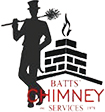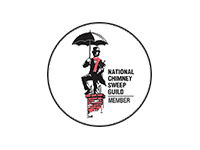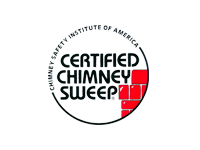Creosote is common to all wood-burning systems. However, not all homeowners are aware of what it is, what its effects are, and how to prevent its buildup. This blog post offers a crash course on creosote, including learning about the different stages of creosote accumulation and steps for preventing further clogging in your chimneys.

What Is Creosote?
Creosote is a tar-like substance that sticks to the sides of chimneys and flues. It comes from wood smoke particles combined with high humidity levels in the duct and unburnt fuel and deposits that settle on the walls due to gravity. Once these things all combine, they form an oily, sooty residue called creosote, which has three forms: stage 1, stage 2 and stage 3.
Stage 1 Creosote
This is found near the top of your chimney and looks like thin white powder. Stage 1 creosote usually causes no fires or blockages. Still, you should monitor it regularly as it can quickly build up over time if not managed appropriately.
Stage 2 Creosote
Also known as glazed creosote, this heavier black substance takes on a glossy finish upon settling into the depths of your chimney’s inner walls and structure. This type needs more frequent cleaning than Stage 1 does because it makes it harder for air currents to push out after each burn season.
Stage 3 Creosote
Also known as hard-pack cresols, this heavy outer layer builds up in layers within seconds of contact with a heat source and can cause blockages. They must be removed promptly before they can build up around tiles as they can catch fire.
Getting Rid of Chimney Creosote
Removal of chimney creosote helps avoid fire hazards and must be done at least once a year. For Stage 1 creosote, you can get rid of it by brushing it away or using a cleaning log. This is especially important if you use your fireplace often. After brushing or sweeping, make sure to sweep the bottom of your fireplace to prevent the remaining creosote from catching fire.
If your chimney has Stage 2 or Stage 3 creosote, it’s time to hire a professional chimney sweep to get rid of it. They’ll first perform a chimney inspection to determine the right steps to address the problem.
Creosote Buildup Prevention
Fortunately, there are plenty of ways to decrease the likelihood of dangerous creosote buildup levels. One of these is using dry, seasoned wood because it creates less ash during burning sessions. Regular inspection and cleaning will also prevent dangerous creosote buildup.
Work Only With a Reliable Chimney Contractor
At Batts’ Chimney Services, our team is trained and knowledgeable about all the complexities of chimneys in homes from the Greater Birmingham Area or Northern Alabama. We can also provide new chimney construction and dryer vent cleaning. Call (205) 956-8207 (Greater Birmingham Area) or (256) 660-1338 (Northern Alabama) for a free quote. You can also fill out our online form to request a consultation.







